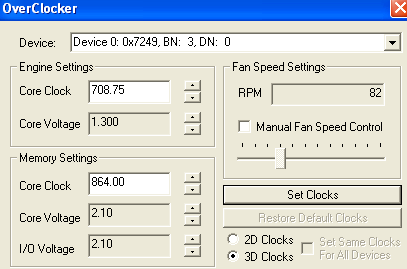System Setup and Notes
Hardware
|
||
|---|---|---|
| Processor(s) | AMD Athlon 64 FX-57 2.8GHz, single-core, 1MiB L2, San Diego, Socket 939 |
|
| Mainboard(s) | ASUS A8R32-MVP | |
| Memory | 2GiB DDR-400 | |
| Memory Timings | 2-3-2-6, 1T | |
| BIOS Version | 0311 | |
| Disk Drive | Seagate ST3160812AS, 160GB, SATA2 ULi M17 |
|
| Graphics Card(s) | Sapphire TOXIC Radeon X1900 XTX (650/775, 709/864) ASUS Radeon EAX1900XTX (650/775) |
|
| Graphics Driver | ATI CATALYST 6.3 | |
| Operating System | Windows XP Professional, SP2, 32-bit | |
| Core Logic Driver(s) | 5.1.2600.2180 | |
Software
| Test Software |
|---|
|
Notes
Driver defaults were used throughout, and stock clocks were used for all cards. If in-game controls could be used for both antialiasing and anisotropic texture filtering, they were, otherwise the driver was used to force the required levels (if applicable and the game allowed it without rendering errors). Tested resolutions were 1600x1200 and 1920x1200.Game tests were run a minimum of three times at each setting, and the median value reported. In the case of manual 'run-through' testing with FRAPS, three consecutive runs that produced repeatable results, after further analysis, were used. If values weren't part of a repeatable set, they were discarded and obtained again.
If you have any questions about our testing methods, please feel free to ask at any time in the HEXUS.community.
Comparison is versus ASUS's example of the Radeon X1900 XTX, with the Sapphire sample tested at stock clocks (675/800) and its maximum stable overclock (709/864, pictured below).
Since the TOXIC is effectively just the cooling solution, it's that which we're mostly evaluating, so we compare it to a standard air-cooled XTX from ASUS.










